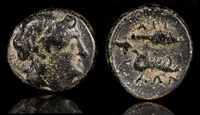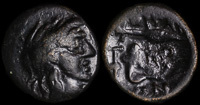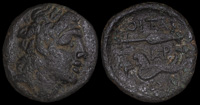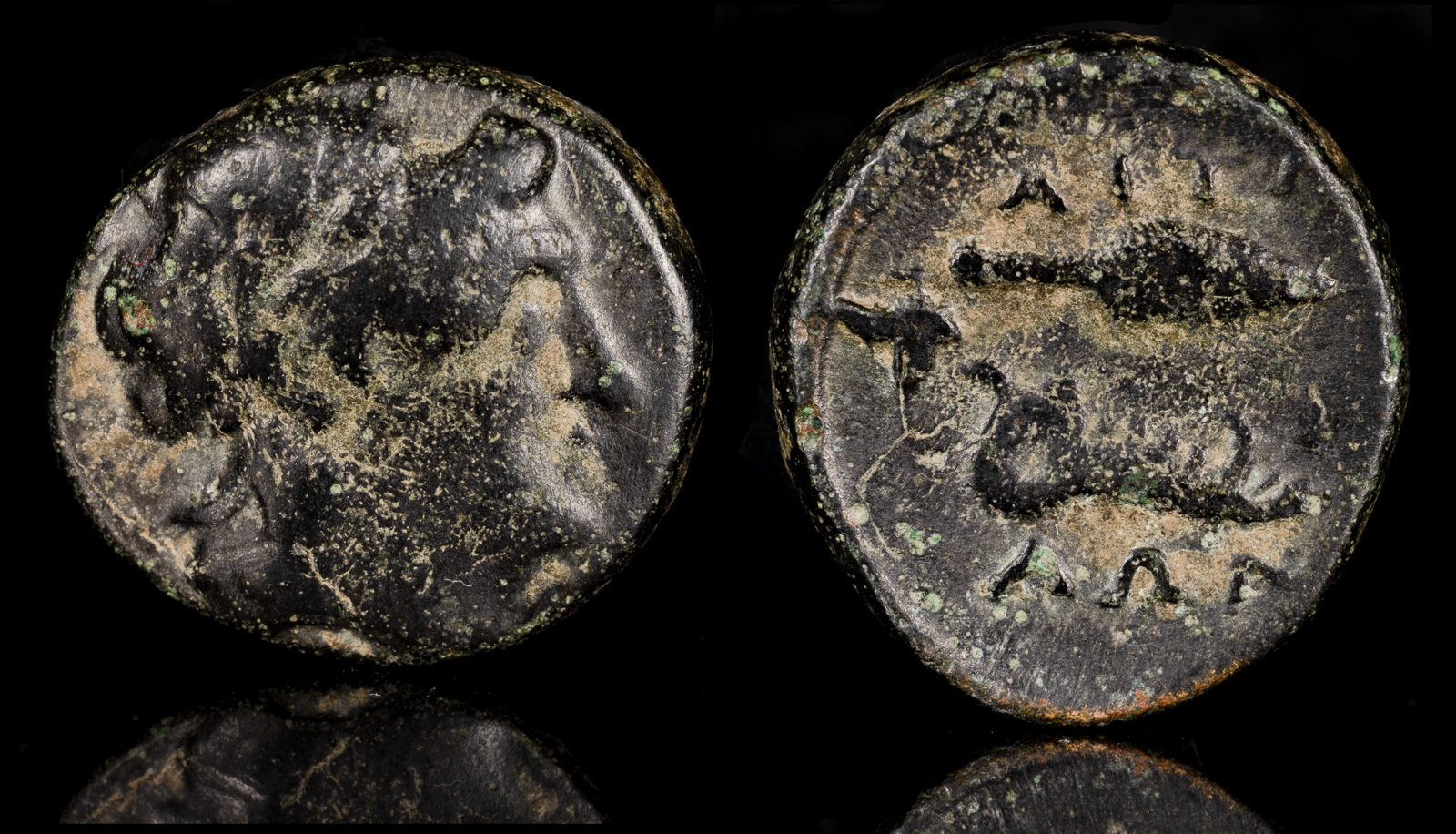Jawbone
View All Tags
The depiction of the jawbone also has symbolic associations with warrior culture and power in ancient Greece. As an image of a boar’s jawbone, it was a symbol of ferocity and bravery, reflecting the importance of these traits in Greek military ethos. The image on coins could evoke the idea of a warrior’s prowess in battle, especially in the context of victory over beasts or monstrous foes that stood as metaphors for enemies in war.
Furthermore, the jawbone could symbolize military success and the collective power of a city-state’s armed forces. By placing the jawbone on coinage, the issuing authority likely sought to invoke divine or heroic protection and favor, signaling to both the citizenry and potential adversaries that the city was under the protection of powerful figures like Herakles. This symbol also linked the local coinage to broader pan-Hellenic themes of heroism and the divine, ensuring that the coins were seen not only as currency but also as markers of a city’s cultural and military identity.

Aetolian League 290-220 BCE

Aetolian League 290-220 BCE

Oetaei, Thessaly 279-168 BCE

Oitaio, Thessaly 279-191 BCE
